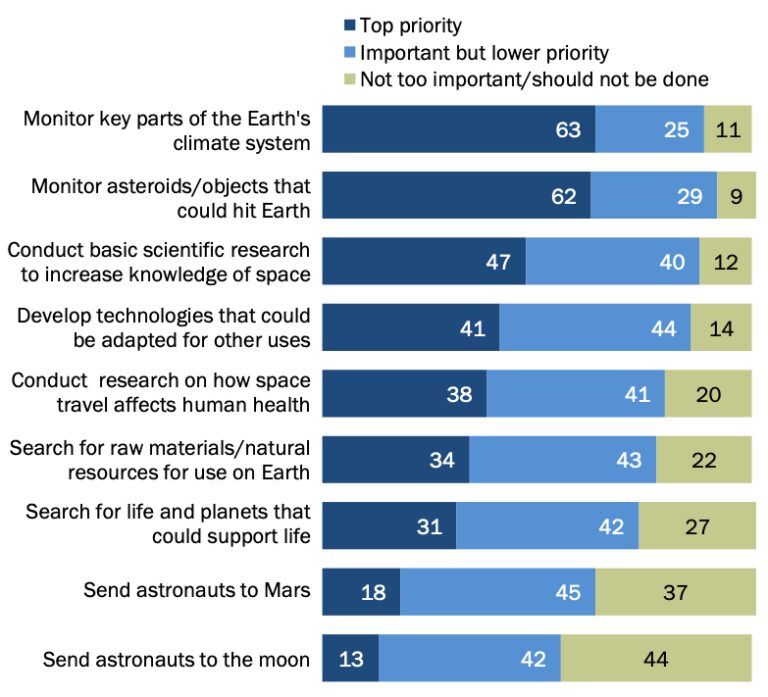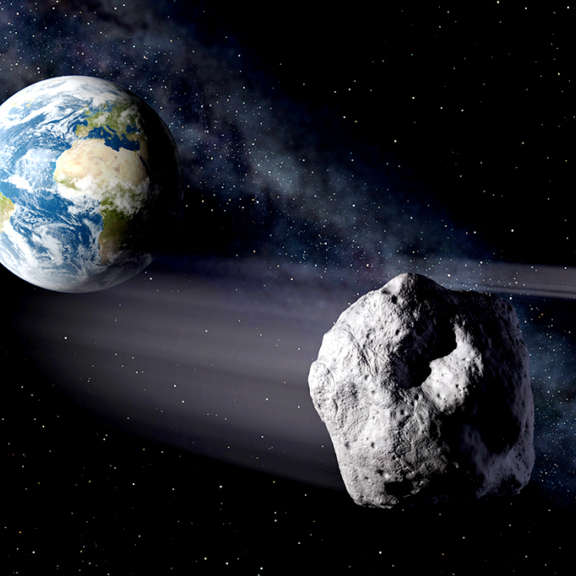Casey Dreier • Dec 17, 2020
NASA Abruptly Delays a Critical Planetary Defense Mission
The Near Earth Object Surveyor mission was supposed to pass a key development milestone in December—instead it was delayed for unknown budget reasons
NASA abruptly delayed a key milestone for the Near-Earth Object (NEO) Surveyor mission, pushing the decision on whether to continue development of this space-based planetary defense mission to the incoming Biden administration.
The NEO Surveyor mission is NASA’s long-planned, oft-delayed response to a Congressional mandate established in 2005 that directed the agency to find and characterize at least 90% of “city-killer” NEOs—objects 140 meters and larger by 2020.
“We are proud of the work the NEO Surveyor team has done to get the project to this mature stage,” said Amy Mainzer, the project’s principal investigator. “We have been ranked highly by the National Academies and during the peer-review process by NASA. We are ready to move to Phase B and fulfill the Congressional mandate.”
With this delay, it is uncertain if the project can launch
by 2025, as requested by recent legislation proposed in the U.S. Senate.
Even with a mid-2020s launch, it would take years for the spacecraft to
achieve the congressional mandate—so every delay now further extends
humanity’s ignorance of the asteroid threat well into the 2030s.
NASA divides development for flight projects into two pieces, formulation and implementation, each of which is broken up into a number of phases. Each phase represents a different scope of work, which projects move through linearly. The first two phases—creatively named A and B—represent formulation work, basically increasingly advanced spacecraft design, project planning, and technology readiness assurance. At the end of Phase B, NASA commits to a formal project cost and allows the team to begin building and assembling the actual spacecraft—implementation.

NASA management must approve the movement from one phase to another. These are known as Key Decision Points (KDPs) and require the team to argue their case to NASA and to an independent review board to demonstrate their readiness to proceed with a successful mission. Normally, the movement from Phase A to Phase B isn’t a major issue, as the project still remains in formulation without a formal cost estimate or commitment to building the spacecraft.
As recently as a week prior to NEO Surveyor mission’s KDP-B, representatives from NASA had publicly stated their intent to continue moving the project forward. It is unclear what happened in the interim to trigger the sudden delay.
A statement from a NASA spokesperson provided some context, but avoided details: “The decision to delay the start of the next phase of this important mission is based on factors external to the NEO Surveyor project team. Specifically, NASA needs more time to assess COVID-19 impacts to the overall Planetary Science Division budget and assess appropriate life cycle costs for this mission to support decisions at KDP-B, as NEO Surveyor formulation activities continue.”
The NEO Surveyor mission has now been in Phase A for over 5 years. Few—if any—missions have remained in this early formulation purgatory for so long, unable to move forward with making important contracts for key materials and hardware, and unable to develop a detailed cost and schedule plan.
There is no longer any debate about the importance of the NEO Surveyor mission. In 2019, the National Academies of Sciences, Engineering, and Medicine released a report calling for a space-based infrared telescope to find NEOs—exactly what the NEO Surveyor mission is. NASA’s own Inspector General concluded that the agency had “consistently underfunded” its NEO observations program, and that, at current projections, there isn’t enough funding to launch the NEO Surveyor mission until as late as 2030.
Congress has been clear in its support, with a number of pieces of legislation in the Senate calling for a launch of the mission by 2025. The House of Representatives has also included supportive language in its NASA legislation, including directing at least $40 million for the project in 2021.
And, if nothing else, the U.S. public considers planetary defense missions like NEO Surveyor to be one of the highest-priority activities of the space agency.

The Planetary Society considers planetary defense to be one of the most important programs at the NASA, and strongly supports its continuation. Despite this unexpected and disappointing delay, the organization will continue to advocate for this mission and make a strong case that this represents a real opportunity for the incoming Biden administration—it’s a broadly popular, affordable, “shovel-ready” project. A no-brainer of a project to endorse if there ever was one.
In an era of coronavirus, we should have learned that low-probability, high-impact events are possible, and we must be prepared for them. There is no higher-impact event than a collision by an asteroid or comet, and right now, we are not looking hard enough. The answer to this problem is clear: the NEO Surveyor mission. The pathway is straightforward. But success remains frustratingly elusive. The Planetary Society will continue to support this critical mission, despite these unnecessary delays.
Defend Earth
How The Planetary Society works to decrease the risk of Earth being hit by an asteroid or comet.
The Time is Now.
As a Planetary Defender, you’re part of our mission to decrease the risk of Earth being hit by an asteroid or comet.
Donate Today

 Explore Worlds
Explore Worlds Find Life
Find Life Defend Earth
Defend Earth


